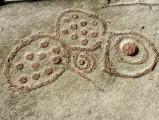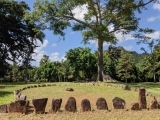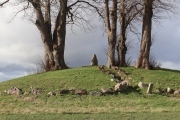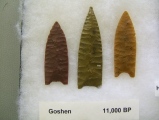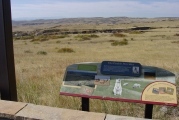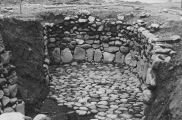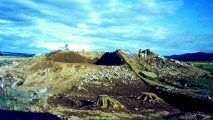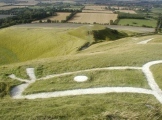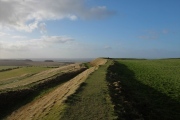Andy Burnham's Blog, page 205
February 25, 2020
Book Review: An Upland Biography: Landscape and Prehistory on Gardom's Edge
An Upland Biography: Landscape and Prehistory on Gardom's Edge, Derbyshire by John Barnatt; Bill Bevan and Mark Edmonds
Rob Ixer writes: Gardoms Edge lies 10km northeast of Bakewell in Derbyshire, within the Millstone Grit a series of alternating sandstones and shales giving rise to boulder strewn, marginal agricultural land and even worse, poorly drained marshy soils.
Rob Ixer writes: Gardoms Edge lies 10km northeast of Bakewell in Derbyshire, within the Millstone Grit a series of alternating sandstones and shales giving rise to boulder strewn, marginal agricultural land and even worse, poorly drained marshy soils.
Published on February 25, 2020 10:53
Caguana
Originally one of the most sacred areas of the indigenous Taino of Puerto Rico, this park boasts ten or more pre-Columbian sacred ball courts, as well as standing stones and petroglyphs. There is also a museum containing information and artifacts relating to the little-known Taino people. The descendants of the Taino live on the island today.
Published on February 25, 2020 09:57
Assenhøj (Aversi)
Round Barrow in Præstø, Denmark. Size 2.5 x 20 meters. There is a menhir (bautasten in Danish) on top of the barrow, which is a rare thing in Denmark. The standing stone is 1.15 meters tall. There is a wall of stones round the barrow and a paved path to the top. The barrow has not been excavated.
Published on February 25, 2020 09:55
February 23, 2020
Hell Gap
Tool find and reoccurring camp area in Goshen County, Wyoming. The Hell Gap site was first uncovered in the late 1950s. It contains a record that includes all cultural complexes known on the Plains between 12,000 and 8,000 years ago. Excavations and finds there helped establish the framework for Paleoindian archaeology as it is understood today in the North American Great Plains. In addition to the many tool finds, post hole marks and other finds indicate seasonal shelters in use at Hell Gap as long as 12000 years ago.
Published on February 23, 2020 11:17
Lindenmeier Site
See the article from The Denver Post about January 2007 meeting to discuss public access to the site.. Ancient butchering and "workshop" area in Larimer County, Colorado. Possibly the best record of Ice Age America, the site on the former Lindenmeier Ranch is the epitome of the paleo-indian culture associated with the Folsom point, used with the atlatl. The dig included not only a kill and butchering site, but also "workshop" areas where tools were made and repaired.
Bones and human artifacts date back to 11,000 BC.
Bones and human artifacts date back to 11,000 BC.
Published on February 23, 2020 11:06
First Peoples Buffalo Jump
A visitor center and interpretive trails tell the story of this prehistoric bison kill site, one of the largest in the United States. For over two thousand years, Indians stampeded buffalo over the mile-long cliff. Now, the top of the jump gives you panoramic views of the Rocky Mountain Front, the Missouri River valley, and the buttes and grasslands that characterized this High Plains setting.
Published on February 23, 2020 10:47
February 18, 2020
Newmill souterrain
More archive excavation photos from Sandy G - including some sadly now destroyed sites. The souterrain at Newmill was discovered by Dr Margaret Stewart who happened upon a digger involved in pre-construction works for the upgrading of the adjacent A9 in Perth and Kinross. The site was excavated in 1977 by Dr Trevor Watkins from Edinburgh University. This work revealed a substantial timber roundhouse and the adjacent souterrain.
Published on February 18, 2020 05:07
North Mains Strathallan round barrow
A now destoyed round Barrow in Perth and Kinross. Prior to excavation by the Scottish Central Excavation Unit in 1978-9 there was a 44m diameter mound standing 4m high with a large cup marked stone on the western edge at this location. The barrow was excavated in advance of a proposed extension to the nearby aircraft runway.
Published on February 18, 2020 05:03
Uffington White Horse
Exclusive: New, much earlier, date for the Uffington White Horse made public, which pushes it back to the Early Bronze Age, 2020 - 1330 BC. This beautiful hill carving, lying close to Uffington Hillfort in Oxfordshire is best viewed from a distance but can be accessed by walking uphill from the signposted carpark. The horse is 110m long and carved through the grass into chalk and has been dated to between 1400 and 600BC. (but see comments below for recent dating update)
Published on February 18, 2020 03:19
February 16, 2020
Uffington Castle
New photos of well-known sites are always welcome, especially if they are high-res using our auto resize feature. This hillfort on the chalk is close to the Uffington White Horse and linked to Wayland's Smithy by the Ridgeway. With a single bank and ditch, it originally had a ring of sarsen stones as a parapet wall. See our nearby sites list for more. There are two oval mounds, one containing a large number of Roman dead. Approached from the B4507, there are magnificent views!
Published on February 16, 2020 08:13

